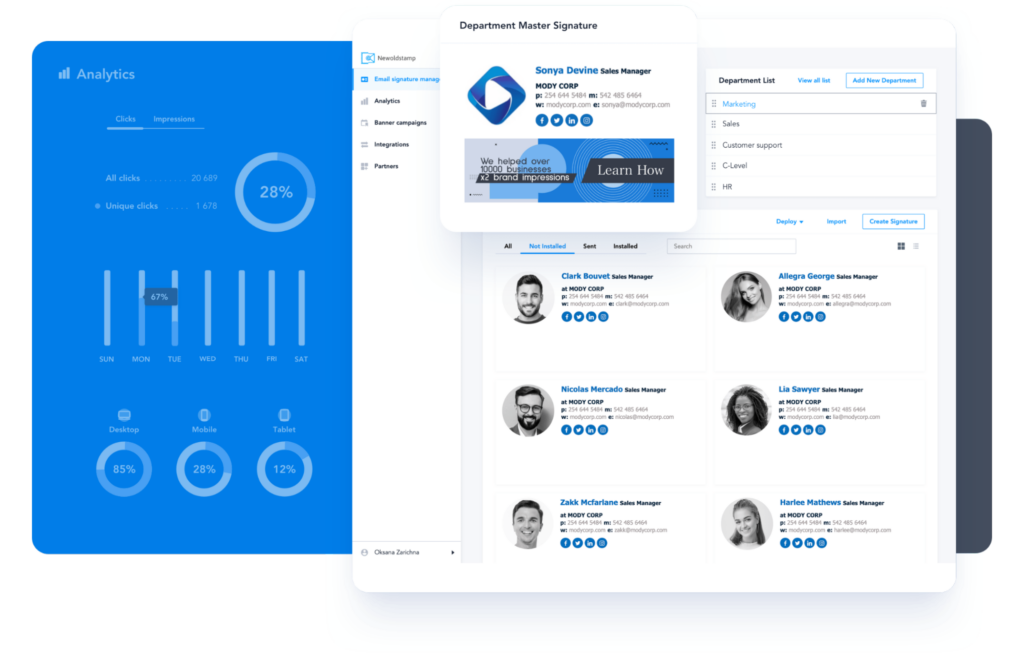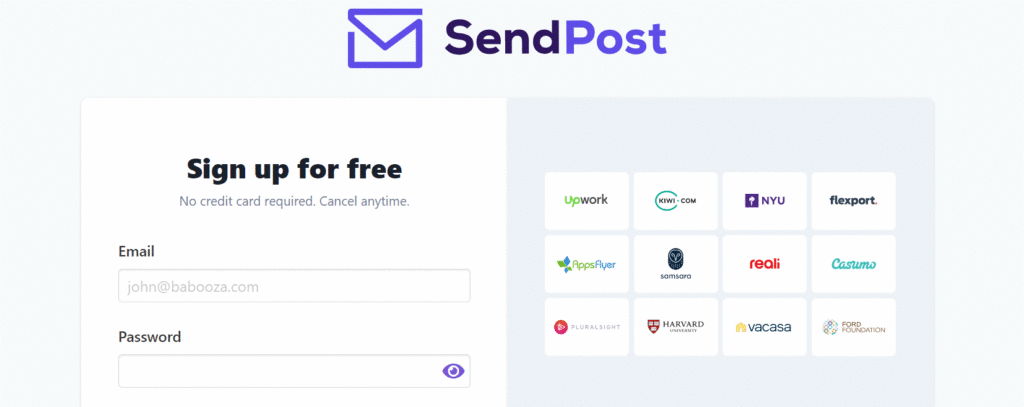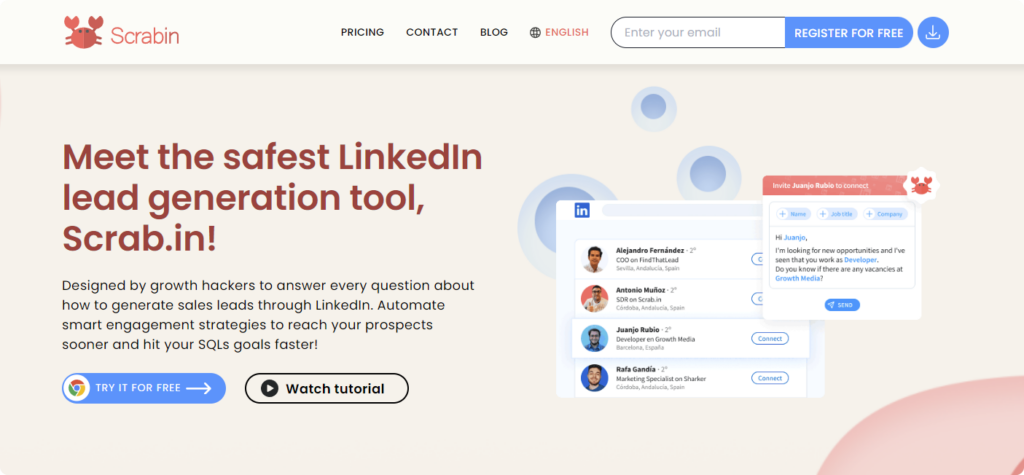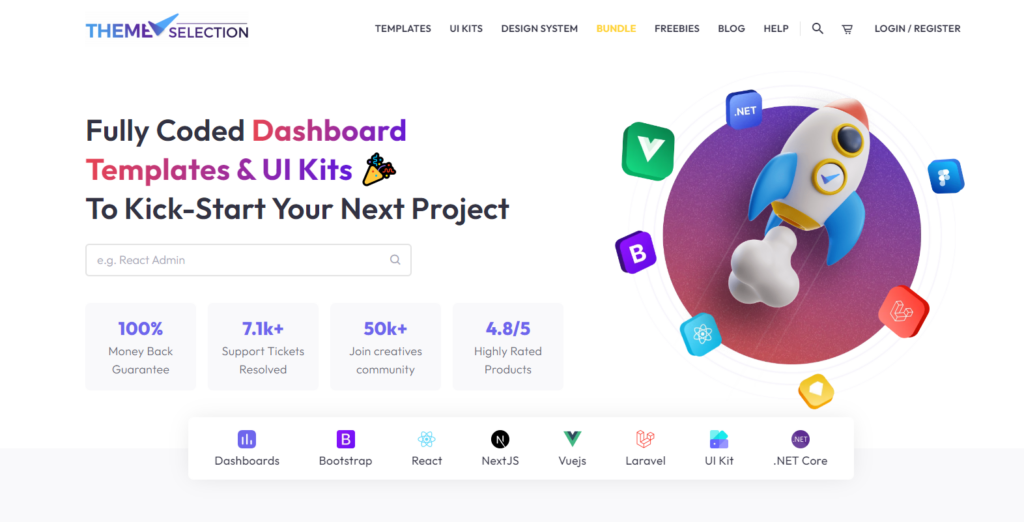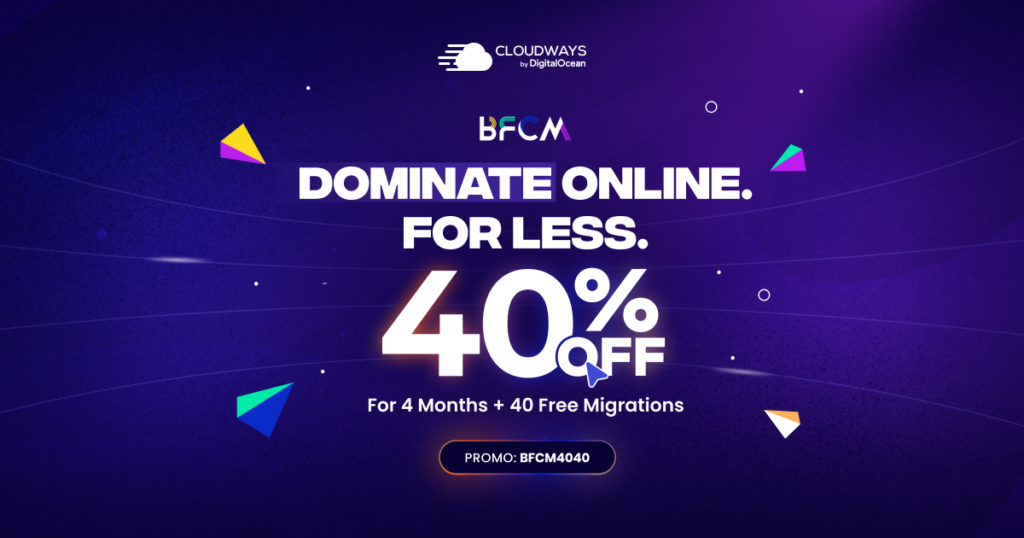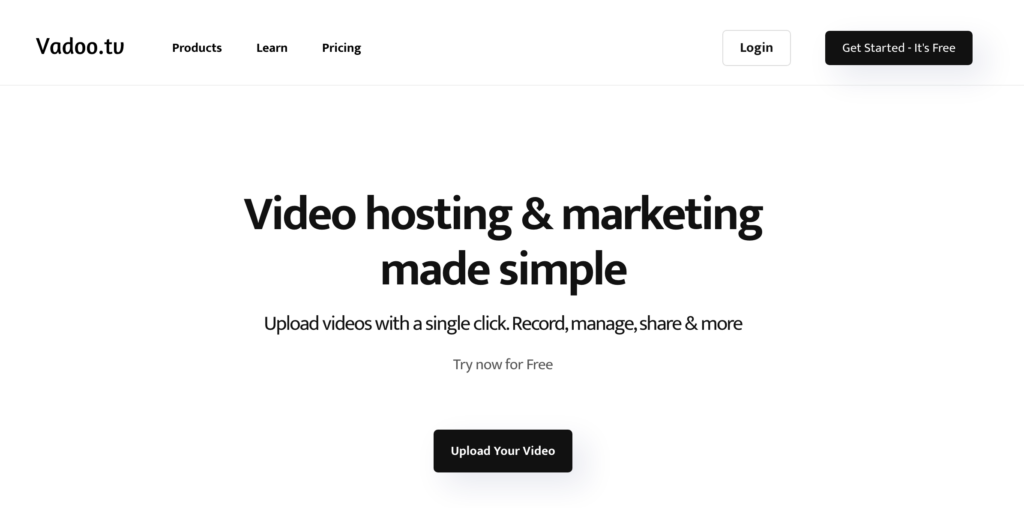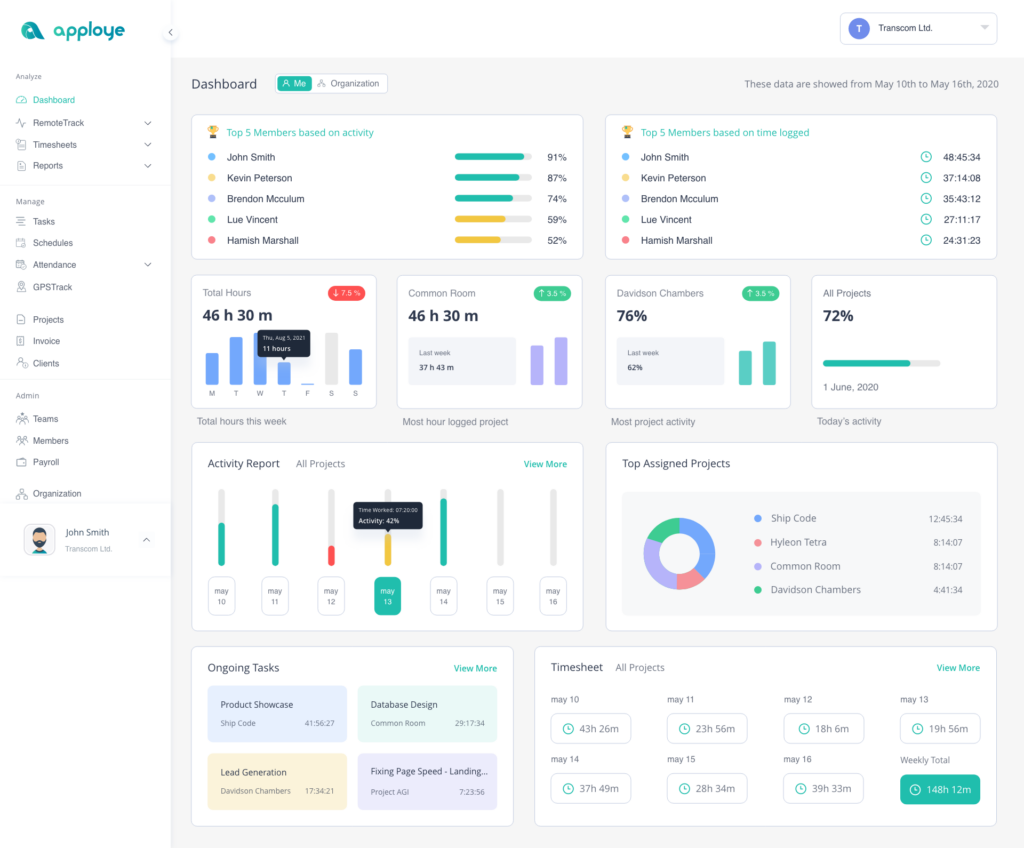
Outdoor marketing remains a potent force even in our digital-centric world. Despite the rise of online ads, 85% of consumers remember seeing an outdoor advertisement in the past month, as highlighted by a study from the University of Pennsylvania’s Wharton School.
This fact emphasizes the lasting impact of billboards, banners, and other outdoor promotional tools. This article dives into the intricacies of this traditional marketing method, presenting the most effective strategies and tools of today.
Whether you’re an experienced marketer or a newcomer, this guide provides the insights needed to make your brand shine in the open air.
What Is Outdoor Marketing?
Outdoor marketing is a broad category of advertising that encompasses any type of campaign executed outside the home. This form of marketing is designed to reach consumers as they go about their daily activities, capturing their attention in public spaces.
The most recognizable form of outdoor marketing is the billboard. Still, the category includes mediums such as transit posters (found on buses, trains, and subways), kiosks, bus shelters, and even guerrilla marketing tactics like sidewalk chalk or unique installations.
Digital billboards and interactive displays have also modernized the OOH landscape, creating more dynamic and engaging content.
The primary advantage of outdoor marketing is its ability to offer high visibility in strategic locations, ensuring that brands can reach many potential customers.
Unlike digital ads that can be skipped or print ads that might go unnoticed, outdoor advertisements are prominently placed in the environment, making them hard to ignore. They’re especially effective in high-traffic areas where they can garner numerous impressions.
The History of Outdoor Marketing
Outdoor marketing, often called out-of-home (OOH) advertising, has been a cornerstone of the advertising world for centuries. Its evolution offers a fascinating glimpse into the changing dynamics of commerce, technology, and societal values.
The Birth of Modern Billboards
Billboards emerged in the 19th century in the U.S. with the railway system expansion. Companies advertised to train passengers using surfaces alongside tracks. By the late 1800s, billboard structures were standardized, leading to large-scale advertising companies.
The 20th Century: A Boom in OOH Advertising
In the 20th century, the rise of automobiles transformed outdoor marketing, making roadside billboards common on highways. As cars became widespread, advertisers targeted on-the-move consumers.
In cities, transit advertising on buses, trams, and subways flourished, with exteriors and interiors used. The mid-century introduced neon signs, with cities like Las Vegas and Tokyo becoming renowned for their neon-lit nightscapes.
Innovation and Regulation
With the growth of outdoor marketing came concerns about aesthetics and safety. The 1960s U.S. Highway Beautification Act regulated billboard size, spacing, and lighting to prevent distractions and protect landscapes.
Concurrently, advances in materials, like vinyl in the 1980s, enabled more vibrant, durable ads, offering advertisers greater flexibility and creativity.
The Digital Revolution
The late 20th and early 21st centuries introduced digital outdoor marketing. Digital billboards, offering real-time updates and interactivity, became pivotal. Some even used cameras and sensors to tailor content based on audience reactions.
Augmented reality (AR) and QR codes further enhanced traditional OOH formats, allowing users to scan codes for extra content or merge digital data with the real world.
The Modern Landscape and Beyond
Today’s outdoor marketing combines traditional and digital techniques. Classic billboards and transit ads now feature QR codes or social media hashtags, connecting the physical and digital worlds.
Additionally, environmental considerations have influenced the industry by adopting eco-friendly materials, solar-powered billboards, and sustainable practices.
The Benefits of Outdoor Marketing
In an age dominated by digital screens and online platforms, one might wonder about the relevance of traditional advertising methods.
However, outdoor marketing, often called out-of-home (OOH) advertising, has not only withstood the test of time but continues to offer unique advantages that digital mediums often can’t replicate. Here are seven compelling benefits of outdoor marketing:
1. Uninterrupted Visibility
Unlike digital ads, which can be skipped, blocked, or closed, outdoor advertisements are prominently displayed in the environment, making them hard to ignore. Billboards, banners, and transit ads command attention by size and placement.
They are there 24/7, ensuring that your message is always visible to passersby, whether they’re pedestrians in a city center or drivers on a highway. This constant exposure increases the likelihood of your message being noticed and remembered.
2. Broad Audience Reach
Outdoor marketing doesn’t discriminate. It reaches out to everyone who passes by, irrespective of age, gender, or socioeconomic status. This broad reach is especially beneficial for brands or campaigns that target a wide demographic.
For instance, a billboard placed in a strategic location can be seen by tens of thousands of people daily. Over time, this accumulates to a massive number of impressions, ensuring that your message reaches a diverse and extensive audience.
3. Enhances Local Presence
For businesses that operate in a specific locality or region, outdoor marketing can significantly boost local presence and recognition.
A well-placed billboard or poster in a community can make a brand synonymous with a particular area, creating a sense of familiarity and trust among local residents.
This is especially beneficial for small businesses looking to establish themselves in a community or larger businesses aiming to create a localized connection.
4. High Recall Rate
Studies have shown that the human brain is more likely to remember something it has seen in the physical world compared to the digital realm. The tangible nature of outdoor advertisements, combined with their size and repetitive visibility, ensures a higher recall rate.
Many people can remember a specific billboard they’ve seen during their commute, even if they’ve only seen it a few times. This high recall translates to better brand recognition and, ultimately, a higher likelihood of conversion.
5. Cost-Effective in the Long Run
While the initial investment for outdoor advertising might seem high, especially for prime locations, its longevity, and broad reach often result in a lower cost per impression than many digital advertising methods.
A billboard, for instance, might be up for several weeks or months, continuously advertising to new sets of eyes. When you break down the cost over the duration and the number of impressions, outdoor marketing often presents a cost-effective solution for brands looking for long-term exposure.
6. Complements Digital Campaigns
Outdoor marketing’s ability to complement digital campaigns extends beyond just QR codes or social media hashtags. Consider the potential of geotargeting: when consumers see a billboard for a product or service, they might immediately search for it on their smartphone.
Brands can capitalize on this behavior by using geotargeted digital ads that appear to users within the vicinity of their outdoor advertisements. This creates a seamless transition from the physical ad they just saw to the digital realm, enhancing the user’s journey with the brand.
Moreover, outdoor advertising can be a visual anchor, reinforcing digital messages. For instance, users might scroll past a digital ad on their social media feed without much thought.
However, if they later encounter a similar outdoor advertisement, the previous digital interaction is recalled, amplifying the message’s impact.
7. Flexibility and Creativity
The vast canvas that outdoor marketing provides is not just limited to billboards. Brands have utilized buses, trams, and even entire buildings to showcase their creativity.
This expansive space allows for larger-than-life representations of products, services, or brand messages, creating a visual spectacle that’s hard to forget.
Moreover, the rise of digital billboards has added a dynamic element to outdoor advertising. These billboards can change messages based on the time of day, weather, or even current events, allowing brands to stay relevant and timely in their communication.
Interactive outdoor campaigns, where audiences can engage directly with the advertisement, have also gained traction.
From billboards that change content based on audience reactions to installations that users can interact with, the merging of technology with outdoor spaces has opened up many creative possibilities.
Top Channels for Outdoor Marketing
As technology advances, so do the methods and channels available for outdoor marketing. Here are the top five channels for outdoor marketing:
1. Digital Outdoor Signage
Digital outdoor signage has revolutionized the way brands communicate with their audience outdoors. Unlike traditional billboards, digital signs can display dynamic content, change advertisements in real-time, and interact with passersby.
One of the leading names in this space is AIScreen, which offers cutting-edge digital signage solutions that enhance brand visibility and engagement. The ability to update content on the fly, coupled with high-resolution displays, makes digital outdoor signage a preferred choice for many advertisers.
It’s not just about displaying an ad; it’s about creating an experience. With features like touch interactivity, motion detection, and even augmented reality integrations, digital signage offers a level of engagement that traditional billboards can’t match.
2. Transit Advertising
Transit advertising refers to advertisements placed on or within public transportation vehicles, such as buses, trains, and taxis, and at stations or terminals. This form of advertising is especially effective in urban areas with a high concentration of commuters.
Whether it’s a bus wrap showcasing a new product or a poster inside a subway car, transit advertising ensures that your message travels with your audience.
Given the captive nature of the audience—people waiting for or riding on public transport—transit ads can have a significant impact. Moreover, with the rise of smart cities, even transit advertising is going digital, with screens displaying ads based on the time of day, location, or weather.
3. Street Furniture Advertising
Street furniture advertising encompasses ads placed on city fixtures like bus shelters, benches, kiosks, and phone booths. These ads are strategically located in high-footfall areas, ensuring maximum visibility.
One of the advantages of street furniture advertising is its ability to cater to pedestrians and vehicular traffic. For instance, a well-designed ad on a bus shelter can catch the eye of someone waiting for the bus and a person driving by.
Given their proximity to the ground level, these ads can be more detailed, allowing for more information or even QR codes that pedestrians can scan.
4. Guerrilla Marketing
Guerrilla marketing is an unconventional form of outdoor advertising that aims to catch people off guard and create a memorable brand experience. It involves creative, sometimes spontaneous activities in public spaces, designed to create buzz and virality.
From flash mobs to interactive installations, guerrilla marketing campaigns are often bold and innovative. The key to a successful guerrilla marketing campaign is originality. It’s about doing something unexpected that resonates with the audience and gets them talking.
While it can be a riskier approach compared to traditional methods, when executed correctly, guerrilla marketing can generate significant media coverage and social media buzz.
5. Building Wraps and Large Format Banners
Size does matter in outdoor advertising. Building wraps and large format banners are hard to miss. These massive advertisements cover the sides of buildings or hang in prominent locations. Given their sheer size, they command attention.
Whether it’s in a bustling city center or along a busy highway, these ads make a statement. They’re especially effective for product launches or major events where you want to make a big splash.
The key is to have a compelling visual and a clear message, as these ads are often viewed from a distance.
Innovative Outdoor Marketing Ideas For Your Business
While traditional billboards and posters still have their place, innovation in outdoor marketing can set your brand apart, creating memorable experiences that resonate with consumers.
Here are five innovative outdoor marketing ideas to elevate your brand’s presence and engage your target audience:
Interactive Digital Billboards
Gone are the days when billboards were static displays. Today’s digital billboards can be interactive, engaging passersby in real-time. Imagine a billboard that responds to the weather, changing its message or design based on rain, sunshine, or snow.
Or consider a billboard that allows users to interact with it through their smartphones, perhaps by playing a game, participating in a poll, or accessing a special promotion.
For instance, a fashion brand could showcase its latest collection and let pedestrians vote on their favorite outfits using their phones. This not only grabs attention but also encourages active participation, making the advertisement more memorable.
Augmented Reality (AR) Experiences
AR technology has opened up a world of possibilities for outdoor marketing. By overlaying digital information in the real world, AR can create immersive brand experiences. For example, a movie studio promoting an upcoming film could set up AR stations in popular city squares.
When people point their smartphones or AR glasses at a specific marker, they can see a trailer or even interact with characters from the movie.
Another idea is for retail stores to use AR to showcase how furniture or clothing might look in a customer’s home or on them, respectively. The key is to create an experience that’s not just novel but also adds value or entertainment for the user.
Pop-Up Events and Experiences
Pop-up events are temporary, often unexpected, events or stores that “pop up” for a short period. They can be incredibly effective for generating buzz and creating a sense of urgency.
A cosmetic brand, for instance, could create a pop-up spa in a city park, offering quick facials or makeup sessions. A tech company might set up a temporary lounge in a busy train station, showcasing its latest products.
The transient nature of pop-ups means that people are more likely to engage, knowing it’s a limited-time opportunity. Plus, the surprise element can generate significant word-of-mouth publicity.
Eco-Friendly Installations
As consumers become more environmentally conscious, brands can make a statement with eco-friendly outdoor marketing initiatives. Consider creating installations using recycled materials or setting up displays that double as urban gardens.
Another idea is to use solar-powered digital displays or create advertisements that can later be repurposed or recycled.
For instance, a brand promoting sustainability could set up a billboard made entirely of recyclable materials and then invite the community to a recycling event once the campaign is over.
Such initiatives not only promote the brand but also resonate with eco-conscious consumers, showcasing the brand’s commitment to sustainability.
Personalized Outdoor Advertising
Personalization is a significant trend in digital marketing, but it can also be applied to outdoor marketing. With the rise of data analytics and smart technology, outdoor advertisements can be tailored to the audience in real-time.
For example, digital displays in shopping malls could showcase ads based on the demographics of the people nearby, detected through mobile data or facial recognition (with proper privacy measures in place).
A billboard in a busy business district might showcase ads for professional services during the day and switch to entertainment or dining ads in the evening. The more relevant the advertisement, the more likely it is to engage the viewer.
I apologize for the inconvenience. It seems I’m currently unable to access external resources directly. However, I can still provide a detailed overview based on my existing knowledge. Let’s dive into some examples of successful outdoor marketing campaigns:
Top Tools To Leverage Outdoor Marketing For Your Business
Here are five top tools that businesses can leverage to make the most of their outdoor marketing efforts:
1. Digital Billboards and Display Screens
Digital billboards are a significant upgrade from their static counterparts. These electronic displays can showcase multiple advertisements in a rotation, allowing businesses to feature various products or messages throughout the day.
The flexibility of digital billboards means that ads can be updated in real time, making them ideal for promotions, flash sales, or timely announcements.
Additionally, some advanced screens come with sensors that adjust brightness based on ambient light, ensuring optimal visibility at all times.
2. QR Code Generators
Quick Response (QR) codes have seen a resurgence in recent years, especially in outdoor marketing. These scannable codes can bridge the gap between physical advertisements and the digital world.
By using a QR code generator, businesses can create unique codes that, when scanned by a smartphone, lead to a specific webpage, video, or promotional offer. This tool not only drives engagement but also allows for easy tracking of campaign effectiveness.
3. Sales automation software
Sales automation software plays a pivotal role in outdoor marketing by streamlining lead management, automating follow-ups, and delivering personalised email campaigns. For example, a retail business can use sales automation to efficiently collect customer leads during outdoor events, send targeted follow-up emails, and manage appointments, ultimately boosting customer engagement and sales conversions.
4. Augmented Reality (AR) Platforms
AR has the power to transform static advertisements into interactive experiences. With AR platforms, businesses can overlay digital information onto physical ads. For instance, a poster for a new movie could come to life with a trailer when viewed through an AR app.
This immersive experience can captivate audiences and create memorable interactions with the brand. Companies like Snapchat and Instagram offer AR ad solutions that can be integrated into outdoor campaigns.
5. Eco-friendly Printing Solutions
As environmental concerns become more pressing, businesses seek sustainable methods in all operations, including marketing. Eco-friendly printing solutions use materials that are biodegradable, recycled, or sourced sustainably.
These printers also utilize inks that are less harmful to the environment. By opting for green printing solutions, businesses not only reduce their ecological footprint but also appeal to environmentally-conscious consumers.
6. Analytics and Tracking Software
To gauge the success of an outdoor marketing campaign, businesses need robust analytics and tracking tools. Modern software can track the times a QR code is scanned or measure engagement with digital billboards.
Some advanced digital displays even incorporate cameras to analyze audience demographics and gauge reactions to advertisements. By harnessing this data, businesses can refine their strategies and optimize future campaigns.
Examples of Successful Outdoor Marketing Campaigns
1. Coca-Cola’s “Share a Coke” Campaign
One of the most iconic outdoor marketing campaigns in recent years is Coca-Cola’s “Share a Coke” initiative. The company replaced its traditional logo on bottles with popular names, inviting consumers to find a bottle with their name or the name of a loved one.
This simple yet effective personalization turned every bottle into a mini billboard. The campaign was amplified with large outdoor billboards showcasing various names, making it a personal experience on a grand scale.
The result? Increased sales and a massive social media buzz as consumers shared pictures of their personalized bottles.
2. Spotify’s “Thanks 2016, It’s Been Weird” Campaign
Spotify humorously leveraged its vast user data with its end-of-year campaign. Billboards showcased quirky, real user habits, such as “To the person who played ‘Sorry’ 42 times on Valentine’s Day, what did you do?”
This campaign was a hit because it combined humor, accurate user data, and a touch of mystery, making it relatable and intriguing. It was a testament to the power of data-driven outdoor advertising.
3. Ikea’s “Climbable Billboard”
To promote the opening of a new store in France, Ikea set up a giant vertical billboard that doubled as a climbing wall.
This interactive billboard was adorned with actual Ikea furniture, showcasing the brand’s products in a fun and engaging way. Not only did it draw attention, but it also allowed consumers to interact with the brand, creating a memorable experience physically.
4. McDonald’s “Sundial Billboard”
In a creative twist, McDonald’s used a billboard as a functional sundial. The shadow cast by the billboard’s structure moved across the board, aligning with images of different McDonald’s breakfast items at the appropriate times of the morning.
It was a clever way to promote their breakfast menu, reminding passersby of the time and, more importantly, that it was time for a McDonald’s breakfast.
5. BIC’s “Shave the Billboard” Campaign
To promote its line of razors, BIC showcased a massive billboard featuring a man’s bearded face. Over time, the beard was “shaved” off, revealing a clean-shaven face, demonstrating the effectiveness of BIC razors.
This dynamic billboard changed over time, encouraging viewers to revisit and see the progress, thereby repeatedly exposing them to the brand and its message.
What Challenges Can One Face in Outdoor Marketing Today?
As brands compete for attention in an increasingly digital world, outdoor marketing must evolve to stay relevant. Here are ten challenges faced in outdoor marketing today:
1. Digital Distractions: With smartphones and digital devices dominating, capturing the attention of a tech-savvy audience is challenging.
2. High Costs: Prime outdoor advertising spaces, especially in urban areas, can be expensive.
3. Vandalism: Billboards and posters can be susceptible to graffiti and other vandalism.
4. Weather Dependency: Outdoor ads can be affected by weather conditions, reducing their lifespan and visibility.
5. Regulatory Restrictions: Many cities have strict regulations regarding the size, location, and content of outdoor advertisements.
6. Short Attention Span: With people on the move, outdoor ads have only a few seconds to make an impact.
7. Measurement Difficulties: Unlike digital marketing, tracking the direct impact and ROI of outdoor ads can be challenging.
8. Environmental Concerns: Large billboards and print materials can be considered environmentally unfriendly.
9. Space Limitations: Conveying a message with limited space requires creativity and precision.
10. Rapid Technological Changes: Keeping up with the latest technologies, like digital billboards and AR integrations, requires constant adaptation.
In conclusion, while outdoor marketing offers vast potential, navigating its challenges requires strategic planning, creativity, and adaptability.
What Is the Difference Between Outdoor and Digital Marketing?
In the vast realm of advertising, two dominant forms have emerged over the years: outdoor marketing and digital marketing.
While both aim to engage audiences and promote brands or products, they employ distinct strategies, mediums, and technologies. Here, we’ll delve into five key differences between these two marketing forms.
1. Medium and Platform
Outdoor Marketing: This form of marketing, often called out-of-home (OOH) advertising, utilizes physical spaces to communicate its messages. Classic examples include billboards along highways, posters in transit systems, banners at events, and even guerrilla marketing tactics in public spaces.
These advertisements are tangible, static (except digital billboards), and are placed in strategic locations to garner maximum visibility.
Digital Marketing: Digital marketing operates in the online realm. It encompasses various platforms and strategies, including search engine optimization (SEO), pay-per-click advertising (PPC), social media marketing, email campaigns, and content marketing.
These advertisements are virtual and dynamic and can be tailored to appear to specific demographics based on online behavior, preferences, and search history.
2. Targeting and Personalization
Outdoor Marketing: OOH advertising is broad in its targeting. While a billboard or transit ad can be placed in a location to reach a particular demographic (e.g., a university campus for targeting students), it doesn’t offer personalized content for each viewer. Everyone who passes by sees the same message.
Digital Marketing: One of the most powerful features of digital marketing is its ability to target specific audiences with precision. Advertisers can tailor content based on a user’s online behavior, location, device, age, gender, interests, etc. For instance, retargeting ads can show products that a user has previously viewed on an e-commerce site, making the advertisement highly relevant to the individual.
3. Duration and Flexibility
Outdoor Marketing: Once an outdoor advertisement is set up, it remains constant for its duration, which could be weeks or even months. Changing the content requires a physical change, which can be time-consuming and costly.
Digital Marketing: Digital ads offer unparalleled flexibility. Advertisers can change their content in real-time based on performance metrics, current events, or inventory levels. For instance, if an ad isn’t performing well, marketers can quickly adjust the design, messaging, or targeting parameters to optimize results.
4. Measurement and Analytics
Outdoor Marketing: Measuring the direct impact of OOH advertising can be challenging. While companies can estimate the number of impressions based on location traffic, it’s harder to determine the exact number of conversions (e.g., purchases) directly attributed to the ad. Some modern methods, like using QR codes on billboards, can provide more direct tracking, but overall, OOH analytics tend to be more generalized.
Digital Marketing: The digital realm offers robust analytics. Marketers can track many metrics, including click-through rates, conversion rates, bounce rates, and more. They can see which ads are most effective, which demographics are most engaged, and which times of day yield the best results. This data-driven approach allows for continuous optimization and a clear return on investment (ROI) measurement.
Conclusion
Outdoor marketing, with its rich history and diverse strategies, remains a pivotal component in the advertising landscape.
From the inception of billboards alongside train tracks to the digital innovations of today, it has continuously evolved to capture the attention of audiences on the move. The blend of traditional and modern methods, coupled with the integration of digital elements.
As brands navigate the challenges and opportunities of this dynamic medium, the fusion of creativity, strategy, and technology will be paramount.
Whether through a captivating billboard, an interactive digital display, or a guerrilla marketing stunt, the essence of outdoor marketing lies in its ability to engage, surprise, and leave a lasting impression on the vast open canvas of the real world.
FAQs
What is the difference Between Outdoor Marketing And Outdoor Advertising?
Outdoor marketing encompasses all external promotional strategies, while outdoor advertising specifically refers to visible ads like billboards and posters.
What insights does this guide provide?
The guide offers insights into effective outdoor promotional methods, the latest tools, and evolving industry trends for successful campaigns.
How does outdoor marketing differ from digital marketing?
Outdoor marketing uses physical spaces for promotions, like billboards, while digital marketing focuses on online platforms and strategies.
Are digital elements incorporated in modern outdoor marketing?
Yes, modern outdoor marketing integrates digital elements like digital billboards, QR codes, and augmented reality for enhanced engagement.
Featured image by Andrae Ricketts on Unsplash
The post Outdoor Marketing 101: Top Strategies, Tools, and More! appeared first on noupe.





